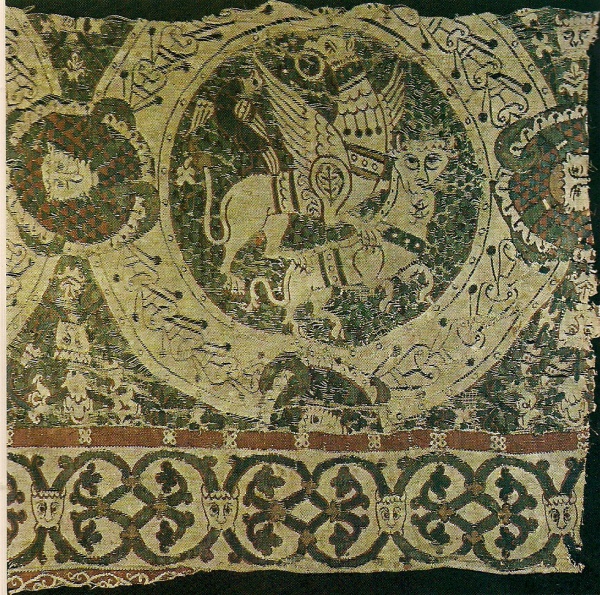Facts About Cloth of St Gereon
The Cloth of St. Gereon is an extraordinary tapestry from the early 11th century, ranking as the second oldest known European tapestry still in existence. This striking piece features a recurring motif of a bull being attacked by a griffin—a mythical creature with the body of a lion and the head and wings of an eagle. Woven using seven different colors, the tapestry prominently displays medallions depicting bulls and griffins in combat, a design likely inspired by Byzantine or Syrian silk textiles. The border and background, however, exhibit a distinctly European style, recalling the illuminated manuscripts from 11th-century Cologne and Western Europe.
Originating from Cologne, the tapestry was named after its initial location, St. Gereon's Basilica. Over the years, the Cloth of St. Gereon was divided into four segments by Dr. Franz Bock, a renowned German art historian. These segments are now housed in various European museums: the Museum of Decorative Arts in Lyon, the Kunstgewerbemuseum in Berlin, the Germanisches Nationalmuseum in Nuremberg, and the Victoria and Albert Museum in London.
The tapestry's design, melding Oriental and Byzantine elements with European influences, renders it truly unique. The fragment in the Lyon museum even embarked on an exhibition tour in Paris from 1989 to 1998. Despite some fading of its once-vibrant colors over time, the Cloth of St. Gereon remains a priceless historical artifact, offering profound insights into the artistic and cultural exchanges of its era.

 Denmark
Denmark